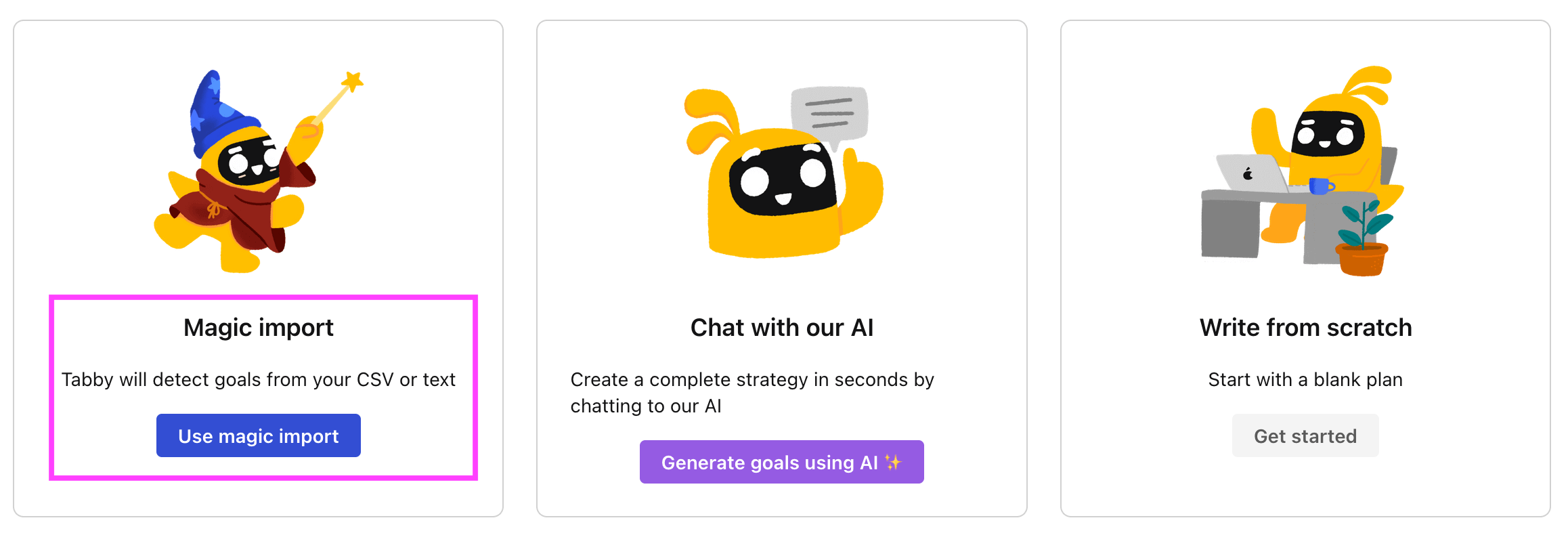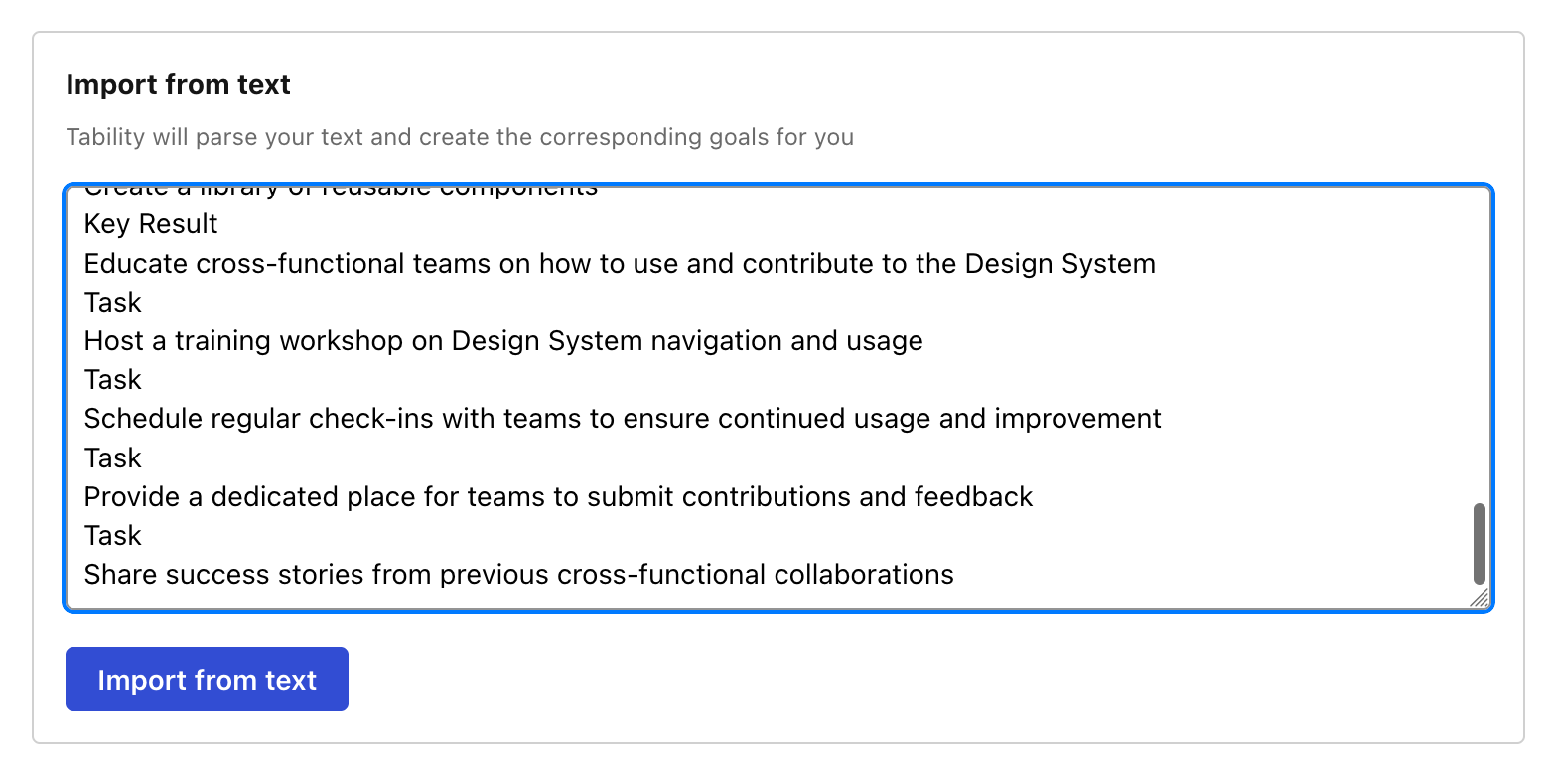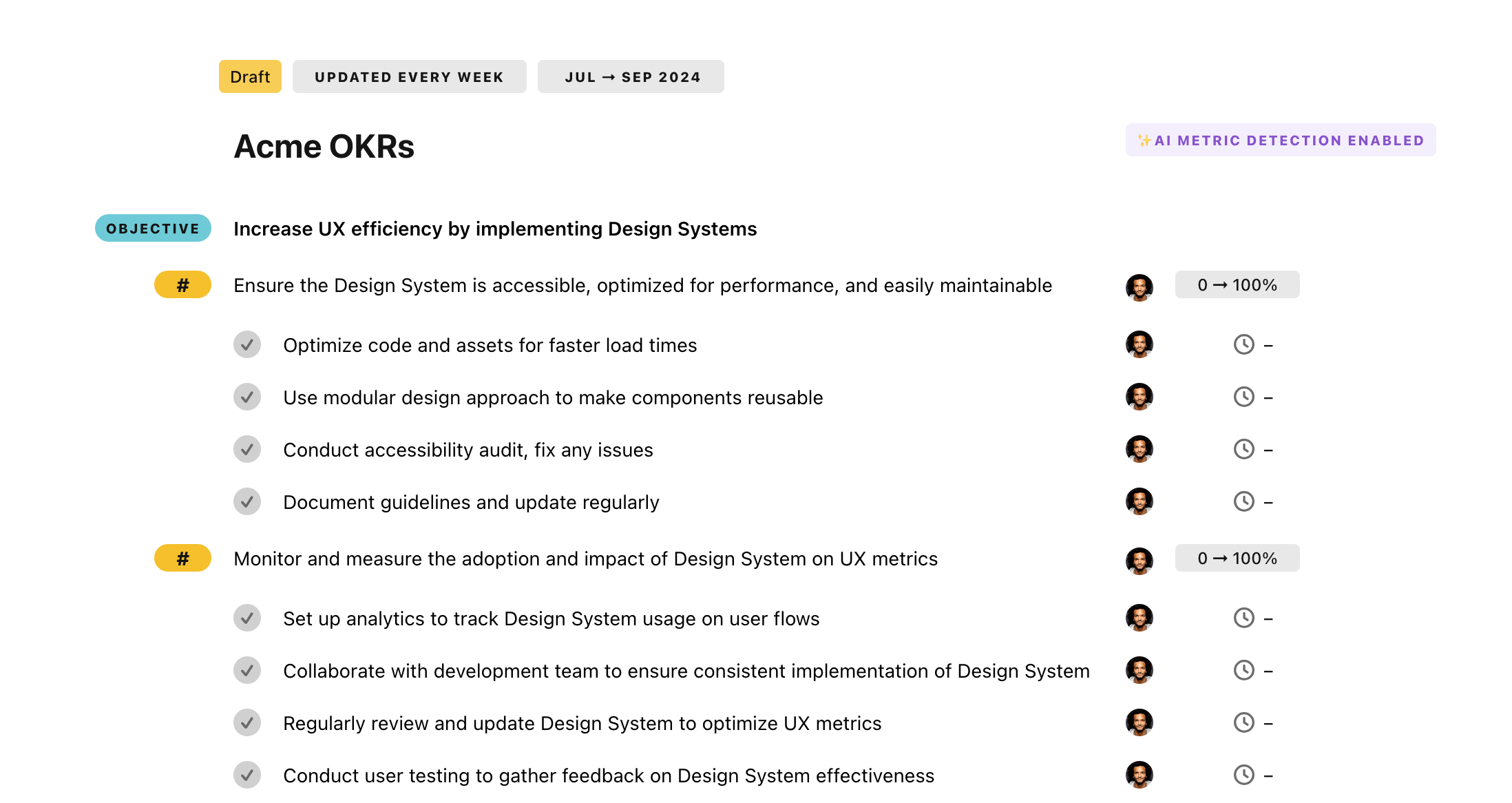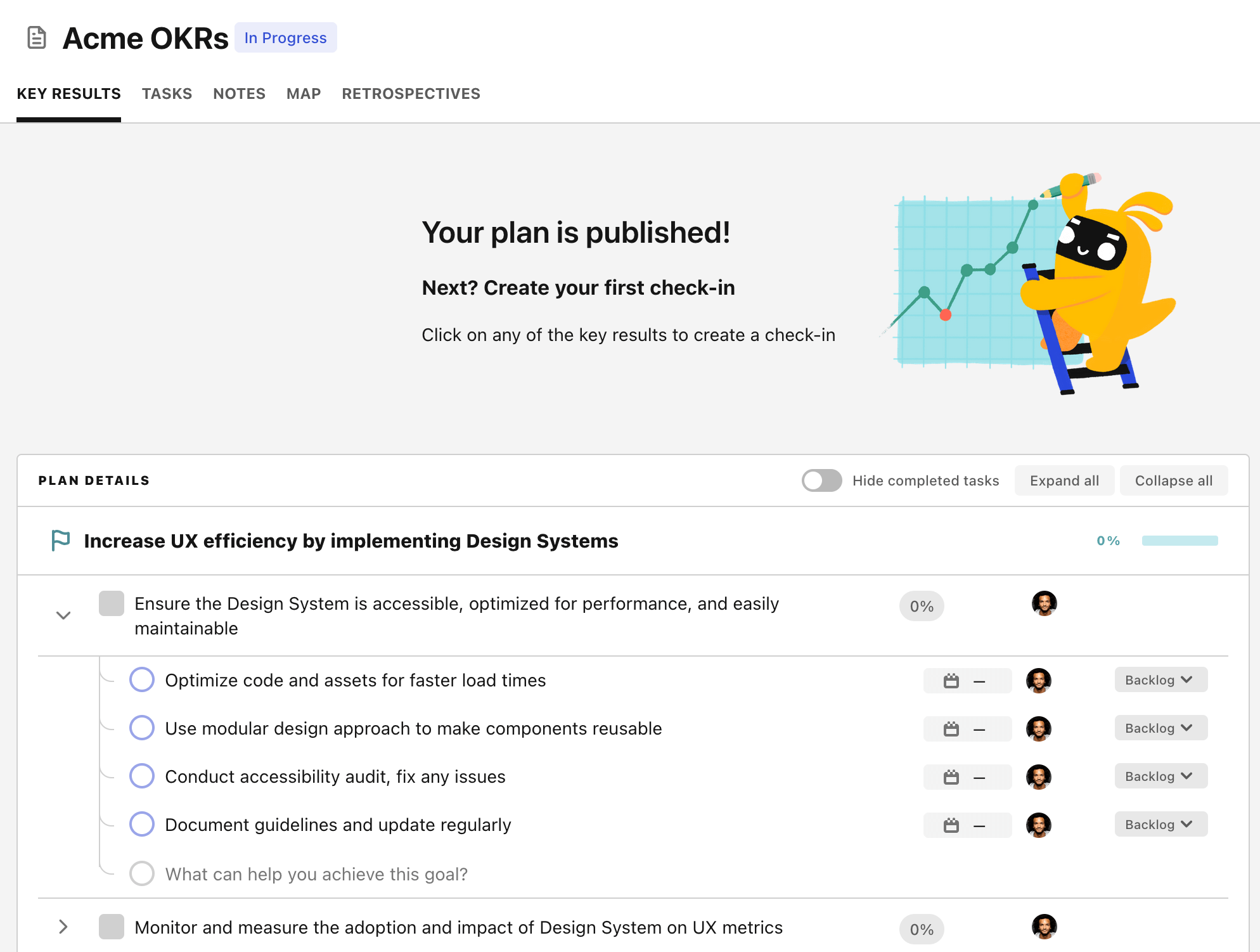OKR template to boost sustainable energy for optimal CRM machine operation
Your OKR template
Additionally, another aim is to increase the energy efficiency of these CRM machines by 20%. However, no specific initiatives are mentioned for this outcome, suggesting that it might be reliant on the overall improvement strategies.
The OKR also aims to have half of the power needs of CRM machines accommodated by renewable energy sources. To realize this, the current energy consumption of these machines will be reviewed, a plan for implementing new energy sources will be discussed, and an investigation into fitting renewable energy sources will be conducted.
Collectively, these three outcomes signify a comprehensive approach to enhance the performance and sustainability of the CRM machines. The alignment of these comes from an overall focus on minimizing energy wastage, prolonging the longevity of these machines, and promoting environmental responsibility.
ObjectiveBoost sustainable energy for optimal CRM machine operation
KRReduce CRM machine downtime by 15%
Implement routine preventative maintenance protocols
Upgrade outdated components regularly
Train operators on correct CRM machine usage
KRIncrease CRM machine energy efficiency by 20%
KRImplement renewable energy sources for 50% of CRM machine power needs
Review current energy consumption of CRM machines
Develop implementation plan for new energy sources
Research suitable renewable energy sources
How to edit and track OKRs with Tability
You'll probably want to edit the examples in this post, and Tability is the perfect tool for it.
Tability is an AI-powered platform that helps teams set better goals, monitor execution, and get help to achieve their objectives faster.
With Tability you can:
- Use AI to draft a complete set of OKRs in seconds
- Connect your OKRs and team goals to your project
- Automate reporting with integrations and built-in dashboard
Instead of having to copy the content of the OKR examples in a doc or spreadsheet, you can use Tability’s magic importer to start using any of the examples in this page.
The import process can be done in seconds, allowing you to edit OKRs directly in a platform that knows how to manage and track goals.
Step 1. Sign up for a free Tability account
Go tohttps://tability.app/signup and create your account (it's free!)
Step 2. Create a plan
Follow the steps after your onboarding to create your first plan, you should get to a page that looks like the picture below.

Step 3. Use the magic importer
Click on Use magic import to open up the Magic Import modal.
Now, go back to the OKR examples, and click on Copy on the example that you’d like to use.

Paste the content in the text import section. Don’t worry about the formatting, Tability’s AI will be able to parse it!

Now, just click on Import from text and let the magic happen.

Once your example is in the plan editor, you will be able to:
- Edit the objectives, key results, and tasks
- Click on the target 0 → 100% to set better target
- Use the tips and the AI to refine your goals
Step 4. Publish your plan
Once you’re done editing, you can publish your plan to switch to the goal-tracking mode.

From there you will have access to all the features that will help you and your team save hours with OKR reporting.
- 10+ built-in dashboards to visualise progress on your goals
- Weekly reminders, data connectors, and smart notifications
- 9 views to map OKRs to strategic projects
- Strategy map to align teams at scale